fxh
OG Party Suit Wearer
- Messages
- 8,573
Follow along with the video below to see how to install our site as a web app on your home screen.
Note: This feature may not be available in some browsers.
Big R&D budgets are a lie. Most of what we pay for goes to marketing and advertising, as well as goosing shareholder value.I thought one of the reasons prescription drugs where so expensive in the USA was because the US consumer is actually paying for all the R&D?
Thats largely bullshit. Much research, not all, is done on taxpayers research money.I thought one of the reasons prescription drugs where so expensive in the USA was because the US consumer is actually paying for all the R&D?
Thats largely bullshit. Much research, not all, is done on taxpayers research money.

here's another gem:
The Strategic Lies of Oncologists
Is it ethical to break cost-controlling rules for a patient’s benefit?
ImageBy Susan Gubar
“We’ll have to invent symptoms,” the doctor said. Since this physician was a paragon of integrity, the patient gasped. With what words could she thank the doctor for such a breach of insurance rules?
Many have fulminated against oncologists who lie to patients about their prognoses, but sometimes cancer doctors lie for or with patients to improve our chances of survival.
Here’s the back story in this case. The patient, a woman in her early 50s, was given a diagnosis of endometrial cancer. After three infusions of chemo, she was supposed to start radiation, but imaging for it detected tumor growth. In other words, her disease was so malevolent that malignancy progressed during treatment. Yet physicians successfully altered the regimen, which she weathered. While some women with gynecologic cancer can use the CA125 blood test as a marker for recurrence, for others it does not work at all; they need scans. This patient is in that category, so she and her oncologist agreed to rely on a CT scan every nine months.
However, the insurance company refused to pre-certify the patient’s scan on the grounds that she had no symptoms of recurrence. Both she and her oncologist were baffled. Three specialists had warned that her cancer would probably return. Umpteen forms, filled out and submitted, failed to change the verdict; the oncologist fumed at insurance representatives on the phone, but to no avail. The doctor then coached my friend to fabricate cramping or bloating — symptoms that the insurance company might see as justification for the scan.
“A shell game,” she tells me, suspecting that her doctor must hate the lie as much as she does: “How humiliating for this consummate professional.”
My friend’s account reminds me of a youthful colleague with a family history of lethal colon cancer. His doctor made up blood in his stool to obtain insurance coverage for a colonoscopy. Precancerous polyps, found and removed, justified future surveillance.
What does the scant literature on the phenomenon of falsification tell us? A 1999 study, “Lying for Patients: Physician Deception of Third-Party Payers,” argues that it has characterized medicine, inside and outside cancer care, for some time. The authors document doctors’ willingness to dissemble in areas ranging from coronary bypass surgery to mammography screening.
“Many physicians sanction the use of deception to secure third-party payers’ approval of medically indicated care,” they wrote.
Physician subterfuge, the article concludes, reflects friction between “the traditional ethics of patient advocacy and the new ethic of cost control that restricts patient and physician choice in the use of limited resources.”
Is it ethical to break cost-controlling rules for a patient’s benefit? At a fork in the road, the doctor must make a decision worthy of the Greek heroine Antigone. Should the patient’s best interest be paramount or the requirements of the system? Distress over the conflict between lawbreaking patient advocacy and law-abiding cost control intensifies with a life-threatening disease.
Dr. Rick Boulay, a gynecologic oncologist, describes the “peer-to-peer” phone consultation that constitutes the final step in the process of trying to get services covered for patients with metastatic disease. He recounts prescribing and defending a (more expensive) PET scan because an earlier CT had produced a false negative. Denial of coverage leads Dr. Boulay to conclude that his patient “may pay with her life for the insurance doc’s inability to look beyond policy.”
Not wanting patients to pay with their lives, how many physicians break or bend health care regulations in order to gain access to reimbursement and therefore to care? For without coverage of pricey drugs or procedures, most patients cannot afford them.
“You will never find it publicly discussed, but it happens; in unique situations, the rules need to be tweaked,” one oncologist-acquaintance confided on the condition of anonymity (because of the fines and sentences associated with insurance fraud). While contending with the mounting burden of electronic medical billing, physicians may encounter problems with the financial gatekeepers of insurance companies. Denials of coverage are made by insurance doctors who may not be specialists or, in some circumstances, vigilant adjudicators.
Earlier this year the former medical director of Aetna for Southern California admitted under oath that he did not review patients’ medical records before approving or denying appeals for insurance coverage. Renata Louwers, the widow of a bladder cancer patient, was especially outraged at this revelation because of the hours she spent on hold as insurers refused to pay for an off-label drug that shrank her husband’s cancer; the couple paid for it themselves until they won an appeal.
Insurers use the periodically updated National Comprehensive Cancer Network Guidelines to determine coverage for a specific regimen for a specific type of cancer. “If the prescribing doctor chooses to go outside” the list, my oncologist-informant explained, “the plan is often delayed or denied.” The network has not yet established detailed guidelines for some of the newest and most expensive targeted therapies. Delays in cancer treatment can be as deadly as denials.
Skyrocketing health care expenses certainly require regulations, most of us realize. And unfortunately oncologists have been known to put money in their own pockets by over-testing and over-treating in practices that do not help patients but could bankrupt our society.
The solution? The oncologist I spoke with suggested that partnerships between clinical care providers and insurance providers could prioritize patients’ well-being while keeping costs as low as possible. The authors of “Lying for Patients” argue that “Alternatives to deception include broadening existing appeal processes on behalf of individuals and political advocacy for health care reform.”
That professionals in the arduous field of oncology feel tempted to lie — in order to care for their patients — must take a psychological toll. Lying may finesse the system for the good of one, but it does not change it for the good of all.
The pressure on the system will only increase as detection tools generate predictions of cancer and genetic analyses produce personalized treatment plans. To facilitate prevention and to obtain proper care, insurance protocols must be made more flexible. Oncologists need to be free — without worrying that they will harm their patients — to speak truth to power.
Susan Gubar, who has been dealing with ovarian cancer since 2008, is distinguished emerita professor of English at Indiana University.
What scandal?You think America's system is bad, just wait to you experience the UK's rationed Socialist system.....the latest scandal is yet another example of a system that protects it's intellegenstia and immaculate medical elite at all costs.
What scandal?
The one where 650 patients were wheeled into the ward of death and given lethal doses of diamorphine to get rid of them. All part and parcel of the deified NHS, where treatment is carefully rationed, your access to life saving drugs is no more than a lottery and if you're the wrong side of 65 they'll practice cold blooded murder rather than you infringe on their precious time and resources demanding treatment:
http://www.dailymail.co.uk/news/art...uiry-hundreds-hospital-painkiller-deaths.html
That is a case of the old boy network covering up for colleagues. Or maybe even closer to killer doctor Harold Shipman.
It has got no relevance whatsoever to whether the health system is private or public.
Institutionalised murder is a flight of fancy.
Nonsense. The profit motive is an alternative ‘flaw’.It has everything to do with it. These crimes are becoming a pattern, the structure of the NHS is the fatal flaw. A private health service would not tolerate such destruction of human life.


Summary: East Asian family encounters American healthcare system, shocked when they get royally fucked.
http://www.foxnews.com/health/2018/...with-bottle-formula-gets-18g-bill-report.html
o haihttps://www.scmp.com/news/world/uni...ancisco-hospital-treated-korean-tourists-baby
San Francisco hospital treated Korean tourists’ baby with a nap and a bottle of milk formula. The bill was US$18,000
The case of baby Park Jeong-whan, who bumped his head, highlights the growing tendency of US hospitals to charge ‘trauma response fees’ that go into effect regardless of the eventual treatment and run as high as US$51,000
PUBLISHED : Friday, 06 July, 2018, 9:45am
On the first morning of Jang Yeo-im’s vacation to San Francisco in 2016, her eight-month-old son, Park Jeong-whan, fell off the bed in the family’s hotel room and hit his head. There was no blood, but the baby was inconsolable. Jang and her husband worried he might have an injury they couldn’t see, so they called 911, and an ambulance took the family – tourists from South Korea – to Zuckerberg San Francisco General Hospital (SFGH). The doctors at the hospital quickly determined that baby Jeong-whan was fine – just a little bruising on his nose and forehead. He took a short nap in his mother’s arms, drank some infant formula and was discharged a few hours later with a clean bill of health. The family continued their vacation, and the incident was quickly forgotten. Chinese tourists in US told to beware of shootings, expensive medical care. Two years later, the bill finally arrived at their home: They owed the hospital US$18,836 for a visit lasting three hours and 22 minutes, the bulk of which was for a mysterious fee for US$15,666 labelled “trauma activation,” also known as “a trauma response fee.
“It’s a huge amount of money for my family,” said Jang, whose family had travel insurance that would cover only US$5,000. “If my baby got special treatment, OK. That would be OK. But he didn’t. So why should I have to pay the bill? They did nothing for my son.”
American hospital bills are today littered with multiplying fees, many of which don’t even exist in other countries: fees for blood draws, fees for checking the blood oxygen level with a skin probe, fees for putting on a cast, minute-by-minute fees for lying in the recovery room.
It’s a huge amount of money for my family. If my baby got special treatment, OK. That would be OK. But he didn’t. So why should I have to pay the bill? But perhaps the pinnacle is the “trauma fee,” in part because it often runs more than US$10,000 and in part because it seems to be applied so arbitrarily. A trauma fee is the price a trauma centre charges when it activates and assembles a team of medical professionals that can meet a patient with potentially serious injuries in the ER. It is billed on top of the hospital’s emergency room physician charge and procedures, equipment and facility fees. Emergency room bills collected by Vox and Kaiser Health News, a US national health policy news service, show that trauma fees are expensive and vary widely from one hospital to another. Charges ranged from US$1,112 at a hospital in Missouri to US$50,659 at a hospital in California, according to Medliminal, a company that helps insurers and employers around the country identify medical billing errors. “It’s like the Wild West. Any trauma centre can decide what their activation fee is,” says Dr Renee Hsia, director of health policy studies in the emergency medicine department at the University of California-San Francisco.
Hsia is also an emergency medicine doctor at Zuckerberg San Francisco General Hospital, but was not involved in the care of the patients discussed in the story – and spoke about the fees generally. Comprehensive data from the Health Care Cost Institute shows that the average price that health insurers paid hospitals for trauma response (which is often lower than what the hospital charges) was US$3,968 in 2016. But hospitals in the lowest 10 per cent of prices received an average of US$725 – while hospitals in the most expensive 10 per cent were paid US$13,525. Data from Amino, a health cost transparency company, shows the same trend. On average, Medicare pays just US$957.50 for the fee. According to Medicare guidelines, the fee can be charged only when the patient receives at least 30 minutes of critical care provided by a trauma team – but hospitals do not appear to be following that rule when billing non-Medicare patients. At the turn of the century such fees didn’t even exist.
But today many insurers willingly pay them, albeit at negotiated rates for hospitals in their networks. Six insurers and industry groups declined to discuss the fees, and a spokeswoman for America’s Health Insurance Plans, the industry trade group, said, “We have not seen any concerning trends surrounding trauma centre fees.” Trauma centres argue that these fees are necessary to train and maintain a full roster of trauma doctors, from surgeons to anaesthesiologists, on-call and able to respond to medical emergencies at all times.
SFGH spokesman Brent Andrew defended the hospital’s fee of over US$15,000 even though the baby didn’t require those services.
“We are the trauma centre for a very large, very densely populated area. We deal with so many traumas in this city – car accidents, mass shootings, multiple vehicle collisions,” said Andrew. “It’s expensive to prepare for that.”
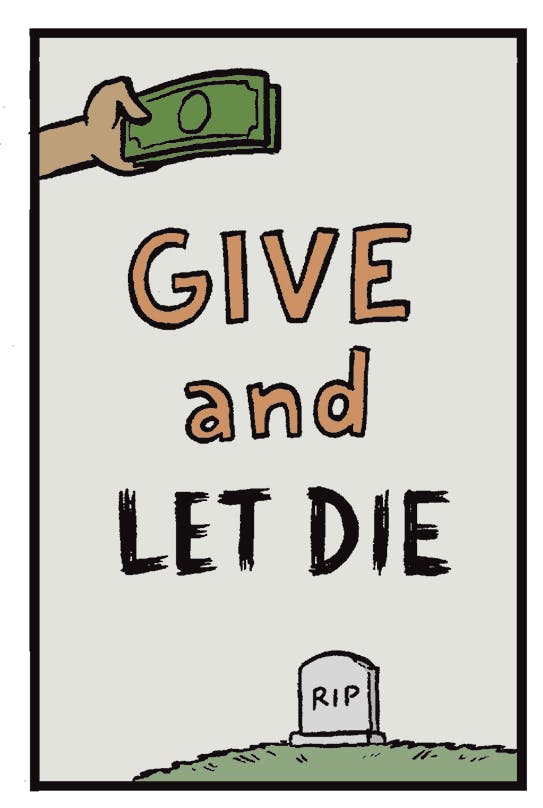
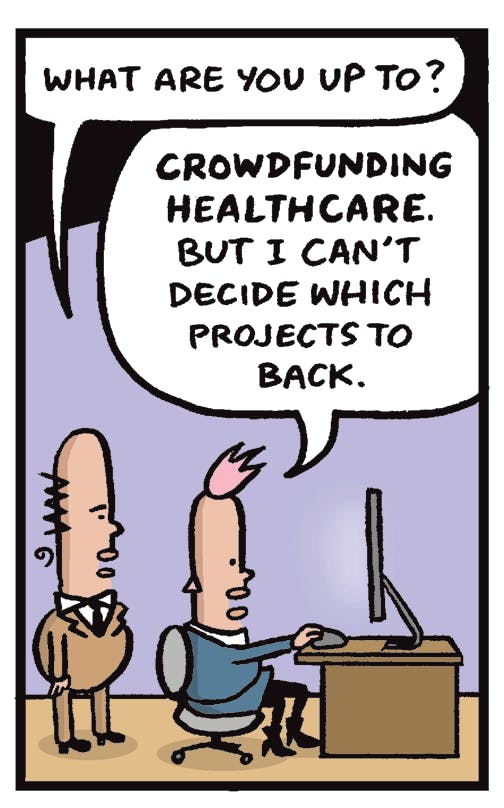
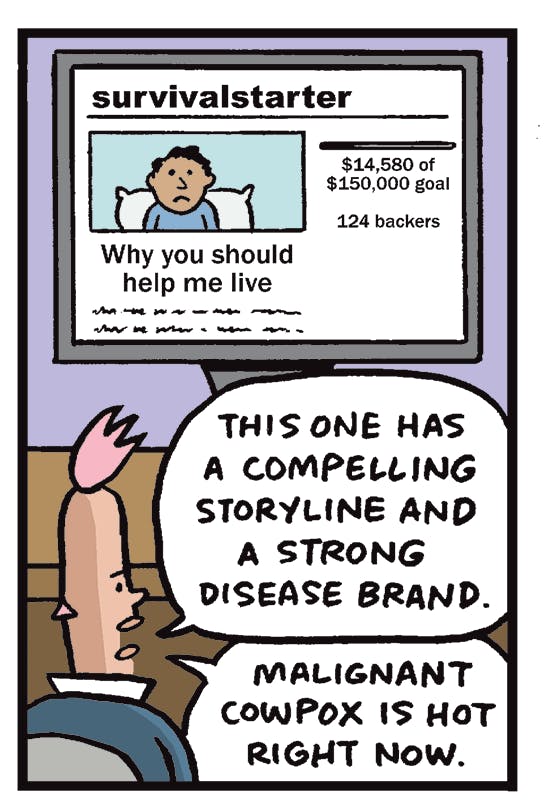
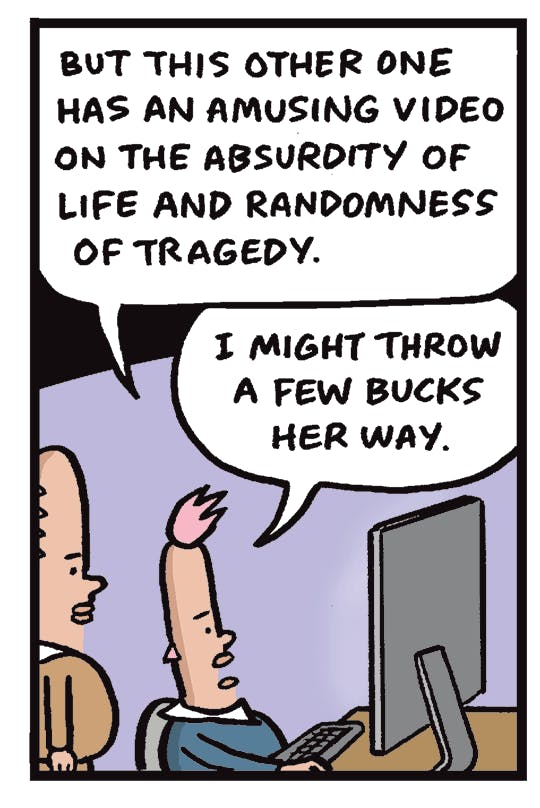
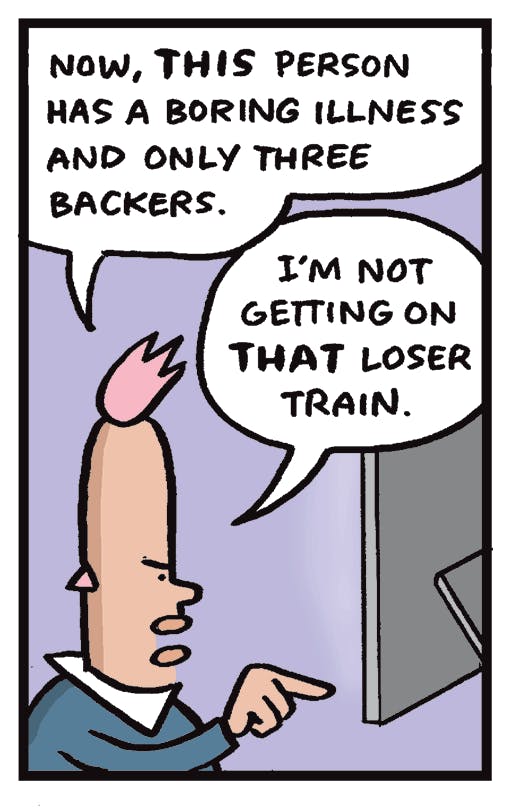
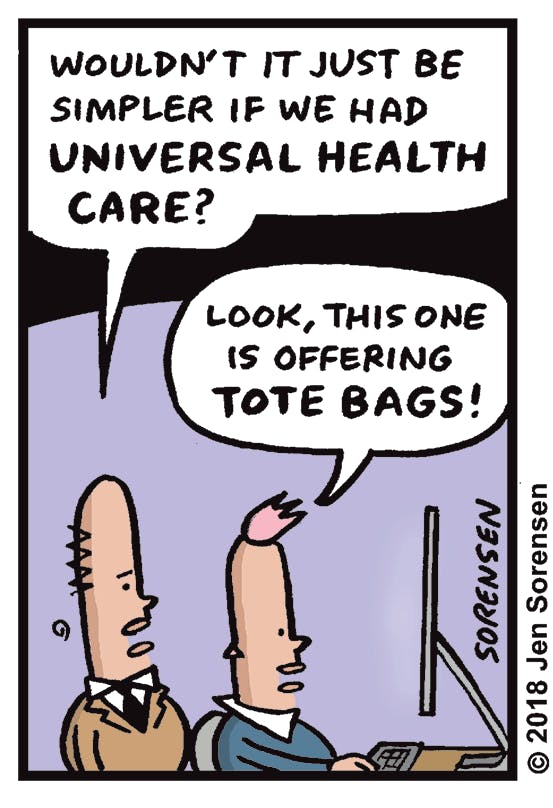
Diabetic ketoacidosis is a terrible way to die. It's what happens when you don't have enough insulin. Your blood sugar gets so high that your blood becomes highly acidic, your cells dehydrate and your body stops functioning.
Diabetic ketoacidosis is how Nicole Smith-Holt lost her son. Three days before his payday. Because he couldn't afford his insulin.
"It shouldn't have happened," Smith-Holt says looking down at her son's death certificate on her dining room table in Richfield, Minn. "That cause of death of diabetic ketoacidosis should have never happened."
The price of insulin in the U.S. has more than doubled since 2012 alone. That's put the life-saving hormone out of reach for some people with diabetes, like Smith-Holt's son Alec Raeshawn Smith. It's left others scrambling for solutions to afford the one thing they need to live. I'm one of those scrambling.
Not enough time
Most people's bodies create insulin, which regulates the amount of sugar in the blood. The roughly 1.25 million of us in the U.S. with Type 1 diabeteshave to buy insulin at a pharmacy because our pancreases stopped producing it.
My first vial of insulin cost $24.56 in 2011, after insurance. Seven years later I pay more than $80. That's nothing compared to what Alec was up against when he turned 26 and aged off his mother's insurance plan.
Smith-Holt says she and Alec started reviewing his options in February 2017, three months before his birthday on May 20. Alec's pharmacist told him his diabetes supplies would cost $1,300 a month without insurance — most of that for insulin. His options with insurance weren't much better.
Alec's yearly salary as a restaurant manager was about $35,000. Too high to qualify for Medicaid, and, Smith-Holt says, too high to qualify for subsidies in Minnesota's health insurance marketplace. The plan they found had a $450 premium each month and an annual deductible of $7,600.
"At first he didn't realize what a deductible was," Smith-Holt says. She says Alec figured he could pick up a part-time job to help cover the $450 per month.
Then Smith-Holt explained to her son what a deductible was.
"You have to pay the $7,600 out of pocket before your insurance is even going to kick in," she remembers telling him. Alec decided going uninsured would be more manageable. Although there might have been cheaper alternatives for his insulin supply that Alec could have worked out with his doctor, he never made it that far.
He died less than one month after going off of his mother's insurance. His family thinks he was rationing his insulin — using less than he needed — to try to make it last until he could afford to buy more. He died alone in his apartment three days before payday. The insulin pen he used to give himself shots was empty.
"It's just not even enough time to really test whether [going without insurance] was working or not," Smith-Holt says.
A miracle discovery
Insulin is an unlikely symbol of America's problem with rising prescription costs.
Before the early 1920s, Type 1 diabetes was a death sentence for patients. Then researchers at the University of Toronto — notably Frederick Banting, Charles Best and J.J.R. Macleod —discovered a method of extracting and purifying insulin that could be used to treat the condition. Banting and Macleod were awarded a Nobel Prize for the discovery in 1923.
For patients, it was nothing short of a miracle. The patent for the discovery was sold to the University of Toronto for only $1 so that live-saving insulin would be available to everyone who needed it.
Today, however, the list price for a single vial of insulin is more than $250. Most patients use two to four vials per month (I personally use two). Without insurance or other forms of medical assistance, those prices can get out of hand quickly, as they did for Alec.
Depending on whom you ask, you'll get a different response for why insulin prices have risen so high. Some blame middlemen — such as pharmacy benefit managers, like Express Scripts and CVS Health — for negotiating lower prices with pharmaceutical companies without passing savings on to customers. Others say patents on incremental changes to insulin have kept cheaper generic versions out of the market.
For Nicole Holt-Smith, as well as a growing number of online activists who tweet under the hashtag #insulin4all, much of the blame should fall on the three main manufacturers of insulin today: Sanofi of France, Novo Nordisk of Denmark and the Eli Lilly Company in the U.S.
The three companies are being sued in the U.S. federal court by diabetic patients in Massachusetts who allege the prices are rising at the expense of patients' health.
The Eli Lilly Company did not make anyone available for an interview for this story. But a company spokesman noted in an email that high-deductible health insurance plans — like the one Alec found — are exposing more patients to higher prices. In August, Eli Lilly opened a helpline that patients can call for assistance in finding discounted or even free insulin.
A dangerous solution
Rationing insulin, as Nicole Smith-Holt's son Alec did, is a dangerous solution. Still, 1 in 4 people with diabetes admits to having done it. I've done it. Actually there's a lot of Alec's story that feels familiar to me.
We were both born and raised in the Midwest, just two states apart. We were both diagnosed at age 23 — pretty old to develop a condition that used to be called "juvenile diabetes." I even used to use the same sort of insulin pens that Alec was using when he died. They're more expensive, but they make management a lot easier.
"My story is not so different from what I hear from other families," Smith-Holt recently told a panel of U.S. Senate Democrats in Washington D.C., in a hearing on the high price of prescription drugs.
"Young adults are dropping out of college," she told the lawmakers. "They're getting married just to have insurance, or not getting married to the love of their lives because they'll lose their state-funded insurance."
I can relate to that too. My fiancé moved to a different state recently and soon I'll be joining her. I'll be freelancing, and won't have health benefits, though she will, via her job. We're getting married — one year before our actual wedding — so I can get insured, too.